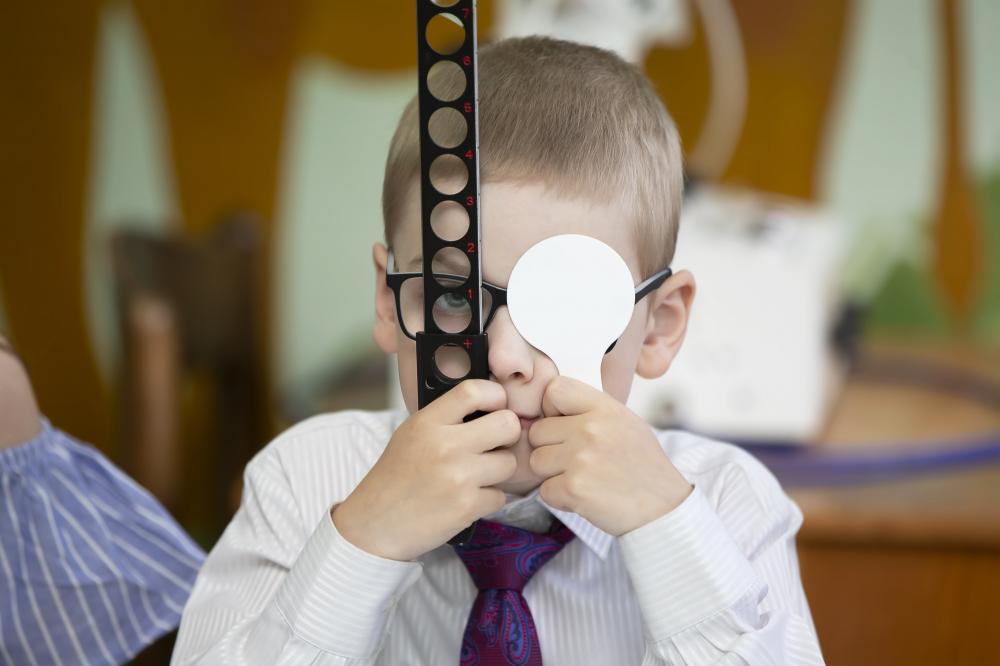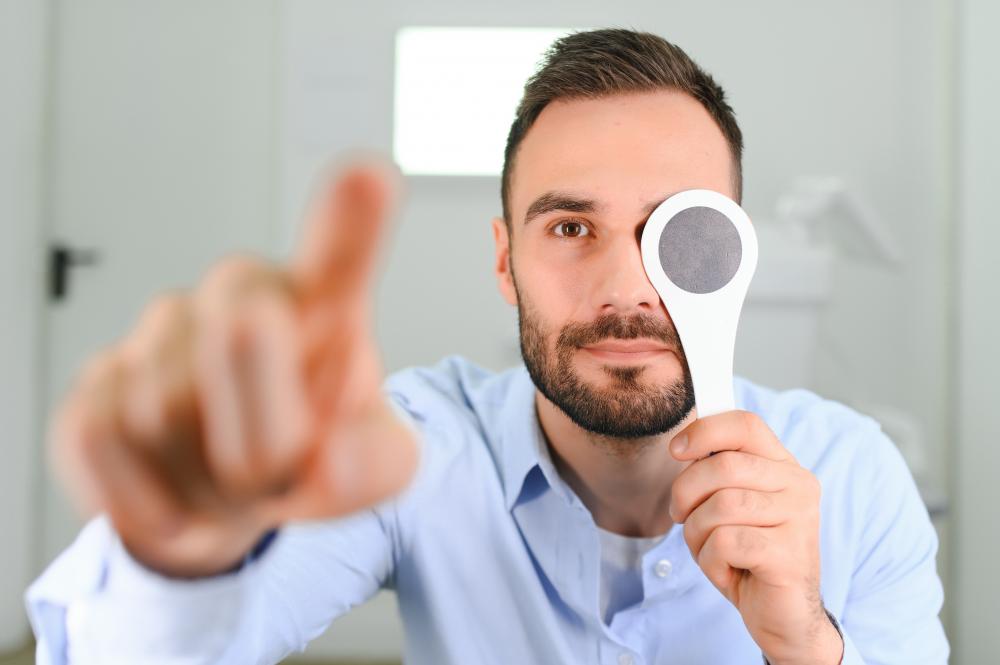Table of Contents
Understanding Medical Eye Patches

Medical eye patches are an essential tool in the realm of ocular health, providing support and therapy for a variety of eye conditions. As a professional at Fresnel Prism, my everyday interaction with these devices has shown me the significant impact they can have on a person’s vision and quality of life. Through precision and innovation, medical eye patches offer solutions that transcend traditional eyewear, catering to unique visual needs.
The journey to find the right medical eye patch can be as unique as the individuals who need them. They are not just simple coverings but are often designed with specific purposes in mind, like shielding the eye post-surgery, improving the function of a lazy eye, or providing relief from light sensitivity. As we explore the uses and nuances of medical eye patches, you’ll discover how they serve as more than just a treatment but as a gateway to improved daily living.
Varieties of Eye Patches
In our work, we’ve seen countless variations of medical eye patches suited for different conditions. There are occlusive eye patches, designed to completely block out light, which can help in the management of lazy eye, also known as amblyopia. On the other hand, there are translucent eye patches that reduce vision to stimulate the weaker eye without entirely blocking out light.
Then we have patches imbued with therapeutic features, like hypoallergenic adhesive for sensitive skin, or ones infused with soothing gels for post-surgical comfort. Some patches are reusable and can be a cost-effective option for long-term use, while others are disposable for hygiene purposes in clinical settings.
It’s fascinating to see the variety and thoughtfulness put into these small yet significant tools. Each type of patch holds the potential to make a tremendous difference in a person’s visual rehabilitation or comfort.
Considerations for Choosing Patches
Selecting the appropriate medical eye patch involves more than meets the eye. Aspects such as the material’s breathability, the strength and comfort of the adhesive, and the shape and size of the patch all play a crucial role in its effectiveness and the wearer’s comfort. Personalized fitting is key, and that’s where our expertise at Fresnel Prism comes into play.
We advise on patches that not only fulfill their intended medical function but also respect the skin’s integrity. For instance, children might require patches with fun designs that encourage compliance, while adults may prefer something discreet and secure for daily wear.
The Role of Eye Patches in Vision Therapy
Vision therapy is a field where medical eye patches truly shine. Through occlusion therapy, we can train the brain to make better use of an eye that has not developed correct vision due to strabismus or other conditions. By covering the dominant eye, the brain is encouraged to rely on the weaker eye, which can improve its function over time.

I’ve witnessed the joy in a patient’s eyes when they start to notice improvement–when the world becomes clearer or when they can read letters that were once blurry. These patches, while small, carry the weight of someone’s world, enabling them to connect with their surroundings in a way they couldn’t before.
The process is not instantaneous, and it requires dedication. But with each patch, there’s a story of perseverance and hope. It’s a reminder that sometimes, the simplest tools can lead to the most profound changes in someone’s life.
Advancements in Patch Technology
At Fresnel Prism, we are at the forefront of optical advancements, and that includes the development of state-of-the-art medical eye patches. We constantly explore new materials and technologies that can make patches more comfortable, more effective, and easier to use.
One such advancement is integrating smart technology into patches. These high-tech solutions can monitor the duration of patch wear or even adjust the level of occlusion as needed. This not only ensures compliance but also provides valuable data for eye care professionals to track progress.
Customization and Comfort
Customization is not a luxury; it’s a necessity when it comes to medical eye patches. Each individual’s anatomy and condition require a unique approach to ensure the best fit and the most effective treatment. At Fresnel Prism, we understand that the comfort of the patch directly influences the wearer’s adherence to the treatment plan.
We advocate for patches that contour perfectly to the face, minimizing gaps that can let in light. A patch must be snug but not constrictive, secure but not irritating. Patients should feel confident that their patch is as much a part of their healing journey as any medication or therapy they receive.
Beyond Traditional Uses
Traditionally, medical eye patches are associated with recovery from surgery or vision therapy, but there are other less commonly addressed aspects. For example, individuals sensitive to light or those with migraines may find relief by wearing a specially designed eye patch. Moreover, athletes and marksmen sometimes use patches to enhance their focus and depth perception.
In these scenarios, the patch becomes a tool for fine-tuning perception or providing respite from environmental stimuli. Exploring these alternative uses opens up a conversation about the broader potential of medical eye patches beyond the clinical setting.
Personal Experiences with Eye Patches
I recall a young patient, hesitant and full of questions about wearing an eye patch. The concern in his eyes was palpable. We selected a patch with his favorite cartoon character, and it became more than a treatment–it became a badge of courage. Weeks later, he returned, proud of his progress and his patch. This is the human touch that goes into each recommendation we make.
Another patient, an elderly woman, needed an eye patch to shield her sensitive eyes from sunlight post-cataract surgery. We found a patch with a gentle adhesive and ample coverage that allowed her to garden again without discomfort. These personal stories highlight the profound impact that a seemingly simple patch can have on daily life.
The Future of Medical Eye Patches
The future of medical eye patches is as bright as the vision we strive to provide our patients. With ongoing research and collaboration with vision specialists, we are on the cusp of introducing even more innovative designs. Imagine eye patches with materials that breathe like skin, or those that deliver medication directly to the eye.

In our pursuit of excellence, we anticipate the integration of more sustainable materials, reducing environmental impact without compromising on quality. The potential for growth in the field of medical eye patches is immense, and at Fresnel Prism, we are committed to being at the helm of these exciting developments.
Conclusion
Medical eye patches are more than simple aids; they are complex, evolving tools that cater to a myriad of eye conditions and personal preferences. In my time at Fresnel Prism, I have seen the small patch make big waves in the lives of our clients. From children to the elderly, the range of individuals who benefit from these patches is vast and diverse.
Whether it’s for recovery, therapy, or comfort, medical eye patches play an indispensable role in ocular health. As we continue to innovate and tailor our solutions, we remain dedicated to providing our clients with the vision to live life to the fullest. At Fresnel Prism, our mission is clear: to enhance the lives of those we serve, one patch at a time.
Do eye patches really work?
Absolutely, eye patches have proven to be an effective tool for various ocular conditions. In our practice at Fresnel Prism, we have seen remarkable success with patients using eye patches for conditions like amblyopia, commonly known as lazy eye. The patch helps by forcing the brain to process visual signals from the weaker eye, thereby improving its function. Moreover, for post-surgical patients, eye patches provide necessary protection and can speed up the healing process by keeping the area clean and shielded from light and debris.
In addition to anecdotal evidence, numerous studies support the use of eye patches in vision therapy, making it a well-established method in ophthalmology. For instance, in cases of amblyopia, patching the stronger eye has been widely documented to improve the visual acuity of the weaker eye. It’s a simple yet powerful tool, and that’s something we’ve witnessed time and time again among our patients.
What are the best under-eye patches?
When it comes to under-eye patches, which are typically used for cosmetic purposes, the “best” can be quite subjective and depends on the specific needs of the user. Typically, these patches are infused with ingredients like hyaluronic acid, caffeine, or vitamins, aimed at reducing puffiness, dark circles, and fine lines.
At Fresnel Prism, while our focus is on medical eye patches rather than cosmetic ones, we understand the importance of skin health in the area around the eyes. We would advise choosing under-eye patches that are dermatologist-tested and free from irritants, especially since the skin under the eyes is particularly delicate.
What is the difference between an eye shield and an eye patch?
An eye shield is typically a rigid, transparent or semi-transparent protection designed to guard the eye against physical impact or injury. It’s commonly used after eye surgeries or in work environments where debris could enter and harm the eye. An eye shield allows some light in and does not inhibit vision in the covered eye unless it is designed to be opaque for therapeutic reasons.
In contrast, an eye patch is a non-transparent covering that’s primarily used to block out all light. This is beneficial in cases where light needs to be occluded for treatment purposes, such as in training a weaker eye to work harder. At Fresnel Prism, we make sure our patients understand the functional differences so they can select the right kind of eye protection for their needs.
What is eye patching used to treat patients with?
Eye patching is commonly used to treat a variety of conditions, most notably amblyopia (lazy eye), strabismus (crossed eyes), and double vision. In therapy for amblyopia, patching the stronger eye stimulates the weaker eye and helps to develop better vision. It is also employed post-operatively to protect the eye and provide the necessary dark environment for healing.
Furthermore, eye patches can be part of a comprehensive treatment for conditions that affect the cornea or eyelids, where protection from light and external stimuli is necessary. In our work at Fresnel Prism, we have also used eye patches as part of the management plan for individuals with specific visual impairments that benefit from the usage of patches, such as certain kinds of vision-induced migraines.
What are some common misconceptions about medical eye patches?
One common misconception is that all eye patches are the same and can be used interchangeably for any ocular condition, which is not the case. There are a variety of patches, each designed for specific conditions and uses. Another misconception is that eye patches are only for children with amblyopia, when in fact, they’re used by people of all ages for different issues, including post-surgery recovery and protection from light sensitivity.
Many might also mistakenly believe that wearing an eye patch can weaken the vision in the covered eye. However, when used as directed by an eye care professional, patches can actually strengthen vision by promoting the use of an underused eye. It’s vital to educate patients on the correct use to dispel these myths and ensure effective treatment.
What are some of the latest innovations in medical eye patch technology?
At Fresnel Prism, we are always exploring new ways to improve the design and functionality of medical eye patches. Recent innovations include the integration of smart technology that can monitor the wear time and adjust the level of occlusion, providing real-time feedback to both patients and physicians. Moreover, there are advancements in the materials used, making eye patches more breathable and comfortable for long-term wear.
We keep an eye on developments that allow for medicated patches which can deliver medication directly to the eye, enhancing treatment efficacy. These innovations are paving the way for more efficient and comfortable ways to treat and manage eye conditions, ensuring that our patients receive the best possible care.
How does one go about choosing the right medical eye patch?
Choosing the right medical eye patch is a personalized process that should take into consideration the specific condition it is meant to treat, the duration it needs to be worn, and the individual’s lifestyle. We at Fresnel Prism assess a variety of factors, including the fit, comfort, and breathability of the material. We also help patients consider the type of adhesive used, especially if they have sensitive skin.
For children, finding a design that they are excited to wear can significantly improve compliance with their treatment plan. And for adults, we often recommend patches that blend discreetly with their daily life. It’s important to have a clear understanding of one’s needs and to seek professional advice to find the most suitable patch for effective treatment.
Resources for Medical Eye Patches
- Centers for Disease Control and Prevention (CDC) – Find information on eye health, including how to protect your eyes, treatment, and prevention of eye disorders and diseases.
cdc.gov/visionhealth/index.html - National Eye Institute (NEI) – Offers a plethora of resources on eye health, educational material, and research on topics including vision loss prevention and eye diseases.
nei.nih.gov - American Academy of Ophthalmology (AAO) – Provides patient education materials on eye conditions and treatments, including the use of eye patches.
aao.org/eye-health - American Association for Pediatric Ophthalmology and Strabismus (AAPOS) – Offers insights into children’s eye health and explains the role of eye patches in treating amblyopia (lazy eye).
aapos.org - Prevent Blindness – A patient advocacy organization that provides information on eye safety and health, including protection and use of eye patches.
preventblindness.org - VisionAware – Offers support and resources for adults with vision loss, including adaptive products and aids like eye patches.
visionaware.org
